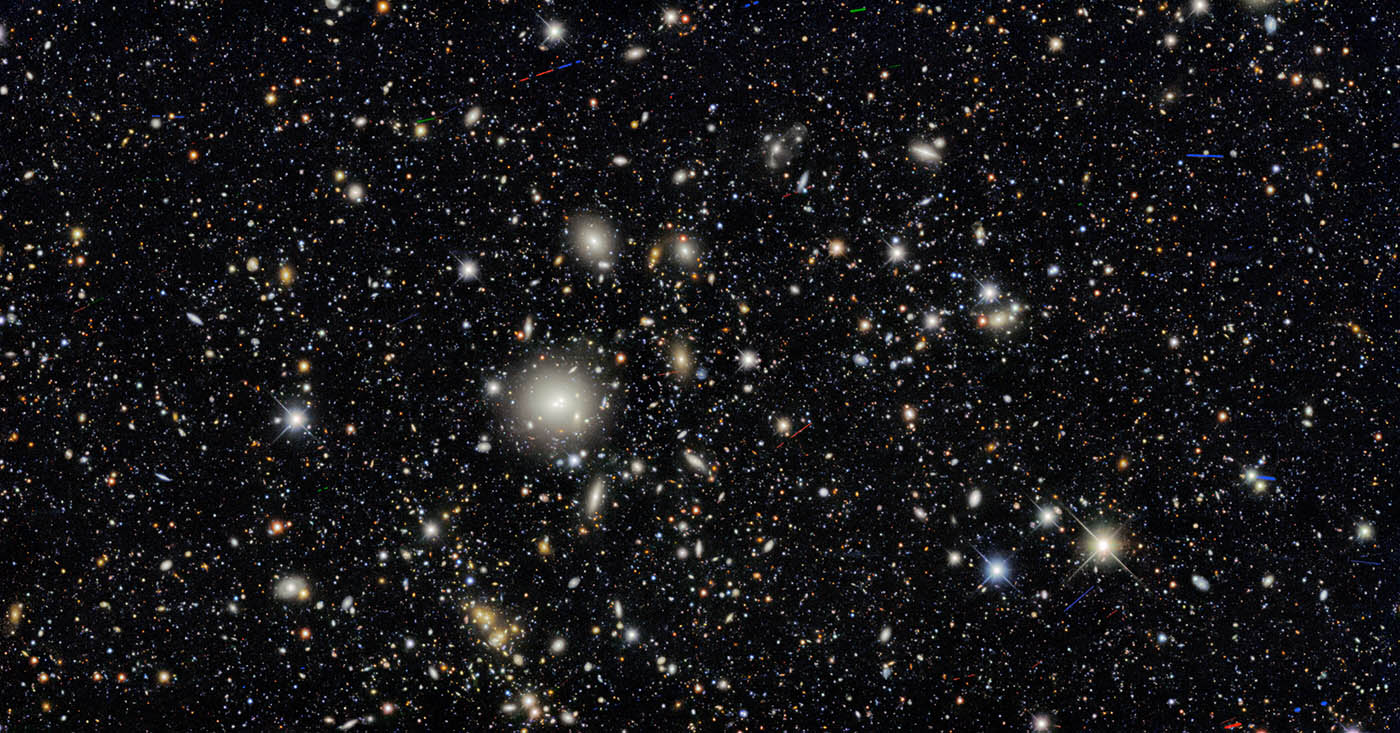NOIRLab: Dark Energy Survey Releases Most Precise Look at the Universe’s Evolution

Ten areas in the sky were selected as “deep fields” that the Dark Energy Camera imaged several times during the survey, providing a glimpse of distant galaxies and helping determine their 3D distribution in the cosmos. The image is teeming with galaxies — in fact, nearly every single object in this image is a galaxy. Some exceptions include a couple of dozen asteroids as well as a few handfuls of foreground stars in our own Milky Way. Credit: Dark Energy Survey/DOE/FNAL/DECam/CTIO/NOIRLab/NSF/AURA Acknowledgments: T.A. Rector (University of Alaska Anchorage/NSF’s NOIRLab), M. Zamani (NSF’s NOIRLab) & D. de Martin (NSF’s NOIRLab)
In 29 new scientific papers, the Dark Energy Survey examines the largest-ever maps of galaxy distribution and shapes, extending more than 7 billion light-years across the Universe. The extraordinarily precise analysis, which includes data from the survey’s first three years, contributes to the most powerful test of the current best model of the Universe, the standard cosmological model. However, hints remain from earlier DES data and other experiments that matter in the Universe today is a few percent less clumpy than predicted.
New results from the Dark Energy Survey (DES) use the largest-ever sample of galaxies observed over nearly one-eighth of the sky to produce the most precise measurements to date of the Universe’s composition and growth.
DES images the night sky using the 570-megapixel Dark Energy Camera on the National Science Foundation’s Víctor M. Blanco 4-meter Telescope at Cerro Tololo Inter-American Observatory (CTIO) in Chile, a Program of NSF’s NOIRLab. One of the most powerful digital cameras in the world, the Dark Energy Camera was designed specifically for DES. It was funded by the Department of Energy (DOE) and was built and tested at DOE’s Fermilab.
Over the course of six years, from 2013 to 2019, DES used 30% of the time on the Blanco Telescope and surveyed 5000 square degrees — almost one-eighth of the entire sky — in 758 nights of observation, cataloging hundreds of millions of objects. The results announced today draw on data from the first three years — 226 million galaxies observed over 345 nights — to create the largest and most precise maps yet of the distribution of galaxies in the Universe at relatively recent epochs. The DES data were processed at the National Center for Supercomputing Applications at the University of Illinois at Urbana-Champaign.
“NOIRLab is a proud host for and member of the DES collaboration,” said Steve Heathcote, CTIO Associate Director. “Both during and after the survey, the Dark Energy Camera has been a popular choice for community and Chilean astronomers.”
At present the Dark Energy Camera is used for programs covering a huge range of science including cosmology. The Dark Energy Camera science archive, including DES Data Release 2 on which these results are based, is curated by the Community Science and Data Center (CSDC), a Program of NSF’s NOIRLab. CSDC provides software systems, user services, and development initiatives to connect and support the scientific missions of NOIRLab’s telescopes, including the Blanco telescope at CTIO.
Since DES studied nearby galaxies as well as those billions of light-years away, its maps provide both a snapshot of the current large-scale structure of the Universe and a view of how that structure has evolved over the past 7 billion years.
